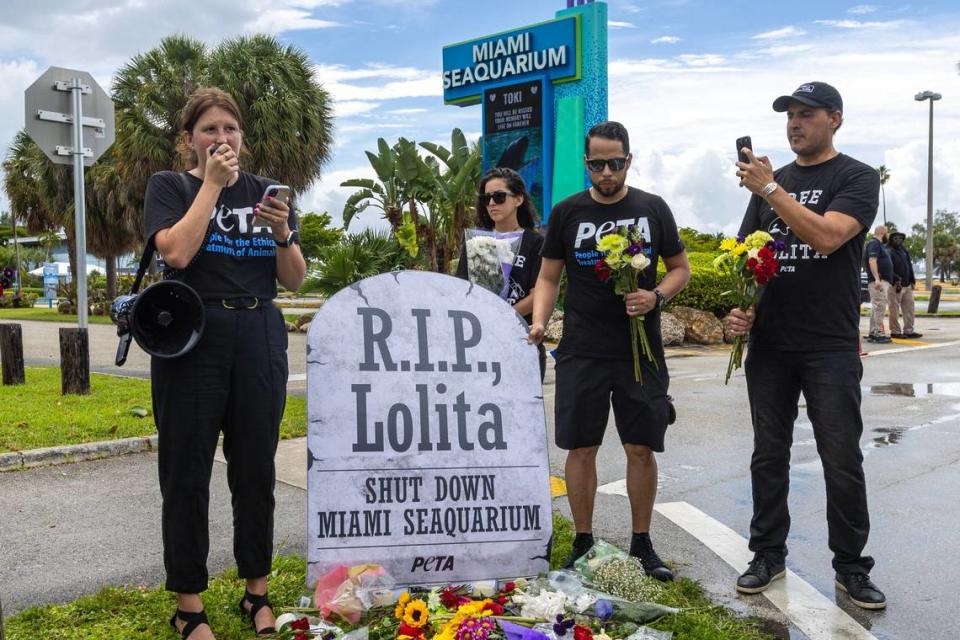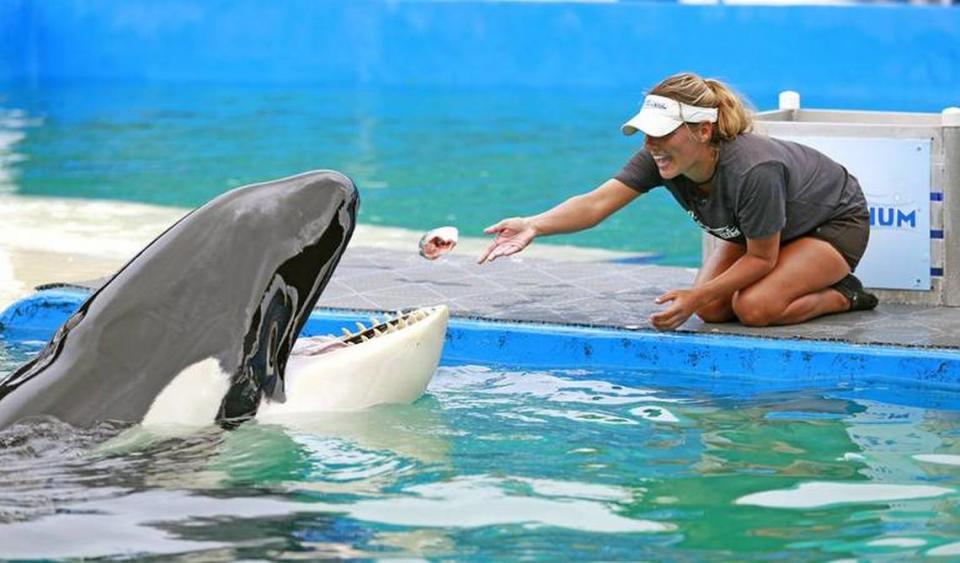What killed Lolita? Necropsy findings released for the Seaquarium’s beloved orca
The Seaquarium’s beloved performing killer whale, Lolita, appears to have died of old age and multiple chronic illnesses, according to the executive summary of her necropsy released Tuesday afternoon to the Miami Herald.
Lolita, also known as Tokitae or Toki, died Aug. 18 at the age of 57. Her carcass was swiftly packed in ice and driven to the University of Georgia, where a necropsy was completed on Aug. 19.
In initial reports, the Seaquarium cited kidney failure as the cause of death. That finding appears to be backed up by the documents released by the Seaquarium on Tuesday.
“The results of the analysis performed indicate that the death was due to the progression of multiple chronic conditions some of which derived from age,” the Seaquarium wrote in a press release.
Miami Seaquarium - Exec Summary by Alex on Scribd
Dr. Judy St Leger, a veterinarian with 20 years of experience working with marine mammals, conducted the necropsy. She found Lolita suffered from “acute and chronic bronchointerstitial pneumonia and renal degeneration, and a chronic condition of the heart implying the degeneration of the cardiac valves.”
Just a few days prior to her death, Lolita was declared to be in excellent health by the veterinarian overseeing her care and by the CEO of The Dolphin Company.

“A week ago, the vets were here. You know, she was doing great. And the staff is completely devastated. Because this just came completely out of the blue,” said Pritam Singh, a Keys developer and founder of Friends for Lolita. “But we had no idea that this was going to happen and so we’re as surprised as anybody else.”
Two of her former vets at Seaquarium told the Miami Herald on Tuesday that the results only underlined their criticisms about the management of the orca’s health. They said they wanted to review more details beyond the executive summary of the necropsy.
Dr. Magdalena Rodriguez was chief veterinarian at Seaquarium for 23 years. Lolita was the major focus of her care.
“She was old as of years ago, but what meds were given and why underfeed an old whale with kidney issues? There should be a more detailed necropsy report. More organ specific and more cultures,” she said. “The world knew Toki was old, but what took her over the edge?”
Dr. Jenna Wallace worked with Rodriguez, and both objected when Lolita’s food intake was cut from 160 to 120 pounds in 2021, warning that she would suffer from dehydration. Seaquarium defended the food cut, saying it was in line with the reduced amount of exercise she was getting.
The two former vets also cooperated with USDA inspectors who have criticized Seaquarium in past reports for poor water quality, rotten food, mishandling incompatible animals and underfeeding animals as punishment for unsatisfactory performances. Both vets were fired in 2021 and claim they lost their jobs at Seaquarium because they were acting as whistleblowers.
“As I have previously stated multiple times over the last two years, I believe the significant diet cut worsened Toki’s pre-existing kidney disease and predisposed her to pneumonia due to dehydration. The fast swimming that was a ‘play session’ and other recent videos of her activity were likely misinterpreted and were actually agitation,” Wallace said. “Combine her agitated state, underfeeding, stress and fast swims, and gastritis can definitely become an issue.”
Wallace said she still had a host of questions. “I believe an in-depth look into Toki’s death, the medications, the staff, and the veterinarians needs to be conducted.“
The animal-rights group PETA on Tuesday evening released a statement decrying the orca’s life in what it described as cramped captivity in the face of regulatory neglect. “If the U.S. Department of Agriculture had intervened when PETA first flagged her minuscule tank as an animal welfare violation back in 2012, Lolita may have enjoyed more than a decade in a seaside sanctuary,” the statement read.
After the necropsy, Lolita’s cremated remains were spread across her home waters in a traditional ceremony conducted by Lummi Nation leaders. Known by her indigenous name of Sk’aliCh’elh-tenaut, the orca was considered a member of the Lummi tribe.
Lolita was being trained for a possible cross-country move to her native waters in the Pacific Northwest. The plan, developed by the nonprofit Friends of Lolita in conjunction with the Whale Sanctuary Project, was to transport the aging orca to a sea pen in Puget Sound, where she was captured from the L pod in 1970. NFL owner Jim Irsay pledged to help fund the $15-20 million relocation, but acknowledged that many obstacles had to be overcome, such as obtaining various state and federal permits.

A group of Lolita’s former trainers and vets, called Truth4Toki, opposed what they called “a risky fundraising publicity stunt” that Lolita would not survive given her age, medical issues and half century in captivity. They advocated a short move to Orlando’s SeaWorld, where she could live in a larger tank and be cared for by orca experts.
Miami Herald staff writer Douglas Hanks contributed to this report.

